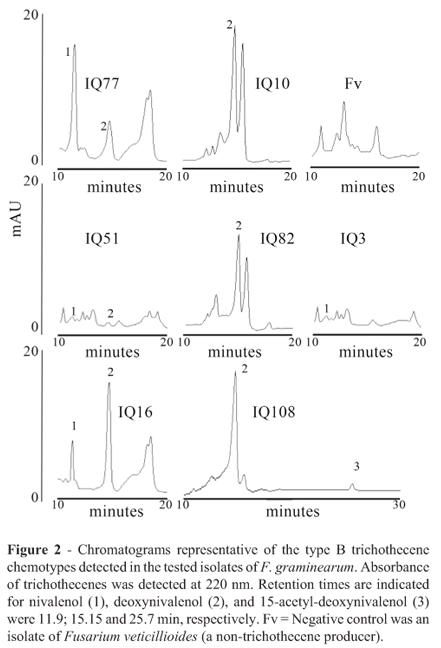Twenty six isolates of Fusarium graminearum from grains of maize hybrids harvested in ±west Argentina were grown on autoclaved rice grain to assess their ability to produce type B trichothecenes. Chemical analysis indicated that 38% of isolates were nivalenol (NIV) producers only, 31% were major NIV producers with high DON(deoxynivalenol)/NIV ratios, 8% were major DON producers with minor NIV production, and 23% were DON producers only. Isolates showed a high variability in their toxigenic potential which was not related to fungal biomass. The distribution of the different chemotypes as well as the high and the low trichothecene-producing Fusarium isolates could not be associated to a geographical origin. Our results confirmed for the first time that isolates of Fusarium graminearum from maize of northwest Argentina are able to produce DON and NIV. A substancial contamination with both NIV and DON is likely in maize from northwest Argentina. Their contents should be quantified in regional surveillances for mycotoxin contamination.
Fusarium graminearum; trichothecenes; maize; chemotypes



